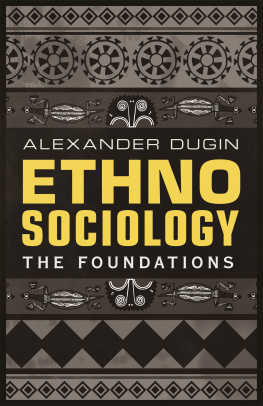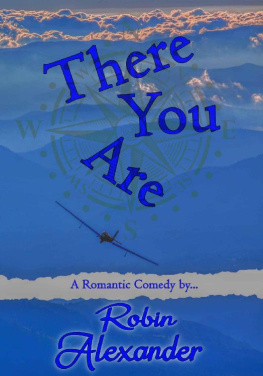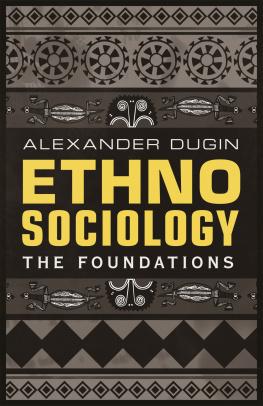Preface
The anthropological field research on which this report is based was conducted for Chicago Natural History Museum. For approximately one year, from November, 1949, to the latter part of October, 1950, I undertook both archaeological and ethnological investigations in the Mariana Islands, principally on Saipan, with short periods of work on Tinian, Rota, and Guam. The present monograph contains the results of field work among the Chamorros and Carolinians of Saipan. A future publication will be devoted to the archaeological phase of the research in the Marianas, while special aspects of the work have been treated in articles in journals (Spoehr, 1951a, 1951b, 1953; Stewart and Spoehr, 1953).
The 1949-50 expedition was also sponsored by the Pacific Science Board of the National Research Council, as part of its program, known officially as Scientific Investigations in Micronesia (SIM). At the time of my field research in the Marianas, the United States Trust Territory of the Pacific Islands was administered by the Department of the Navy, which extended its full co-operation and valuable assistance.
As in the case of my past field research undertaken in behalf of Chicago Natural History Museum, I am indebted to the Museum for its generous financial support of the Marianas project. Mr. Stanley Field, President of the Museum, and Colonel Clifford C. Gregg, Director, provided their usual thoughtful aid. To Dr. Paul S. Martin, Chief Curator, Department of Anthropology, I am particularly indebted for encouragement and assistance. Miss Lillian Ross, Associate Editor of Scientific Publications, has kindly devoted much time and painstaking effort to seeing this report through the press. Miss Agnes McNary, Departmental Secretary, had given generous assistance during the period of preparation of the manuscript for publication.
To the Pacific Science Board goes most of the credit for the anthropological field research carried out in Micronesia since World War II. It was a privilege to have the Marianas expedition receive the official sponsorship of the Pacific Science Board. Mr. Harold J. Coolidge, Executive Director of the Board, provided invaluable assistance in acting as liaison with the Navy Department and in caring for the great number of details inevitable in the preparation for a field project in the Pacific. He has my special thanks. Miss Ernestine Akers of the Honolulu office of the Pacific Science Board was most helpful, and I am grateful for her assistance.
The Navy Department kindly allowed me the use of government transportation for my family and myself from San Francisco to the Marianas and extended also the use of inter-island transportation facilities. The Department permitted me to rent quarters on Saipan for my family, provided commissary privileges, and in many other ways helped to make my stay in the Marianas both pleasant and productive. I am appreciative of the interest shown in my field work by Admiral A. W. Radford, then High Commissioner of the United States Trust Territory, Rear-Admiral L. S. Fiske, then Deputy High Commissioner, and Commander L. B. Findley. On Guam, Rear-Admiral and Mrs. E. C. Ewen and Commander E. C. Powell were most hospitable. For their assistance on Saipan, I am particularly grateful to Captain W. C. Holt, then Governor of the Northern Marianas, and to Mrs. Holt, to Commander and Mrs. J. R. Grey, and Commander and Mrs. W. R. Lowndes. Commander Grey and Commander Lowndes were in turn Civil Administrators of the Saipan District during my period of field work. To the following members of the administration staff and to their wives I am indebted for aid and hospitality: Captain S. P. Sanford, Lieutenant Commander J. B. Johnson, Lieutenant C. J. Carey, Lieutenant J. S. Broadbent, Lieutenant J. S. Bowman, Lieutenant R. F. Roche, Lieutenant B. I. Rosser, Lieutenant (jg.) S. Weinstein, Lieutenant (jg.) D. D. Moore, Lieutenant (jg.) W. E. Laskowski, Ensign R. K. Hoffman, Chief C. T. Smallwood, Staff Sergeant J. E. Hinkle, U.S. M.C., and Messrs. Cyrus F. Quick, Frank L. Brown, Ernest G. Holt, Kan Akatani, Woodrow H. McConnell, and John A. Wood.
I also wish to acknowledge the friendly interest of the members of the Capuchin mission on Saipan, in particular the Reverend Ferdinand Stippich, OFM, Cap., the Reverend Rufin Kuveikis, OFM, Cap., and the Reverend Marchand Pellet, OFM, Cap.
An ethnologist is, most of all, indebted to the people among whom he has worked. My thanks go to all the Chamorros and Carolinians who helped me so generously during my stay on Saipan. In particular, I wish to express my gratitude to the following Chamorros and their families: Messrs. Ignacio V. Benavente, Vicente de L. Guerrero, Ricardo T. Borja, Elias P. Sablan, William S. Reyes, Juan M. Ada, Joaquin S. Pangelinan, Jos S. Pangelinan, Ignacio Sablan, Antonio S. N. Palacios, Joaquin M. Palacios, J. Torres, and Jos A. Shimizu, as well as Soledad J. Camacho.
Among the Carolinians, I am especially appreciative of aid received from Messrs. Benedicto Taisacan, Antonio Mangarero, David Massiano, Antonio Angailin, and Eduardo Peter, and from Maria Taisakan.
To Dr. Paul Fejos and the Wenner-Gren Foundation for Anthropological Research, Inc., my thanks go for the loan of photographic equipment.
On my return to the continental United States, I was enabled to conduct additional documentary research on the Marianas through a grant-in-aid awarded by the Social Science Research Council, to whom acknowledgment for their generosity is herewith made.
Finally, to my wife, Anne Harding Spoehr, goes my special gratitude for handling the problems of logistics on Saipan, for her assistance in the composition of text figures, and for her forbearance and encouragement during the period of field work and subsequent preparation of this report.
ALEXANDER SPOEHR
December 1, 1952
List of Illustrations
TEXT FIGURES
1. Map of the Mariana Islands
2. Map of Saipan
3. Sanvitores (from Garcia, 1683)
4. Chart of the Marianas, by Alonzo Lopez (1700; from Burney, 1803-17, vol. III)
5. Excavations at Obian (Objan), 1950
6. Reminder of war. Burned-out American tank on Saipan, 1950
7. Reminder of war. Ruins of sugar mill, Saipan, 1950
8. Map of Saipan place names and districts (after Cloud, 1949)
9. Church at Chalan Kanoa, Saipan, dedicated in 1949
10. Upper: Street in Chalan Kanoa. Lower: Chamorro house in Susupe village








